
How much does it cost to install a doorbell camera? It depends on whether you plan to DIY or hire a pro. Learn about different models and their power sources, too.
See which home security tips can help make your home safer


Maximizing your home security can help protect your home from break-ins while giving you peace of mind. The best home security tips include a multifaceted approach that tackles potential room for crime from several different angles. Here are 12 ways to make your home more secure.

If you don’t already have security cameras, this step is a simple and effective way to secure your home’s exterior and interior. There are many types of home security systems on the market, and each one comes with its own specs and services. High-end models have better image quality, microphones, speakers, motion sensors, smartphone connectivity, and more. However, these security cameras tend to cost more.
The average security camera installation costs $1,300, but prices can vary anywhere from $600 to $2,000 for an entire home system with installation. If you DIY it, you’ll spend between $125 and $450 per security camera.

Most security cameras have recording features that you can monitor manually. Step it up a notch with a 24/7 home security service near you. With this home security upgrade, your security camera system provider has professional monitoring that automatically notifies you of alarm triggers.
If there’s a possibility of an emergency, a customer support representative will contact you with emergency assistance. From there, they can reach out to a dispatcher from your local fire department or emergency services depending on the situation. Keep in mind, that you’ll end up paying a monthly subscription fee for most monitoring services that can range anywhere from $10 to $65 per month.
Your smoke detectors and carbon monoxide detectors can help catch and alert you of unsafe air conditions. But if the batteries have been long worn out, then these detectors offer a false sense of security. For some, it’s easy to ignore the incessant sounds of a beeping detector, but for others, that sound is enough to make changing the batteries a no-brainer. Toss old batteries and put in new batteries if any of your detectors don’t work.
It’s important to replace the batteries when the detectors beep, but it’s also important to test your safety alarms as a whole. We recommend testing your security detectors at least once a month to ensure they’re in working order.
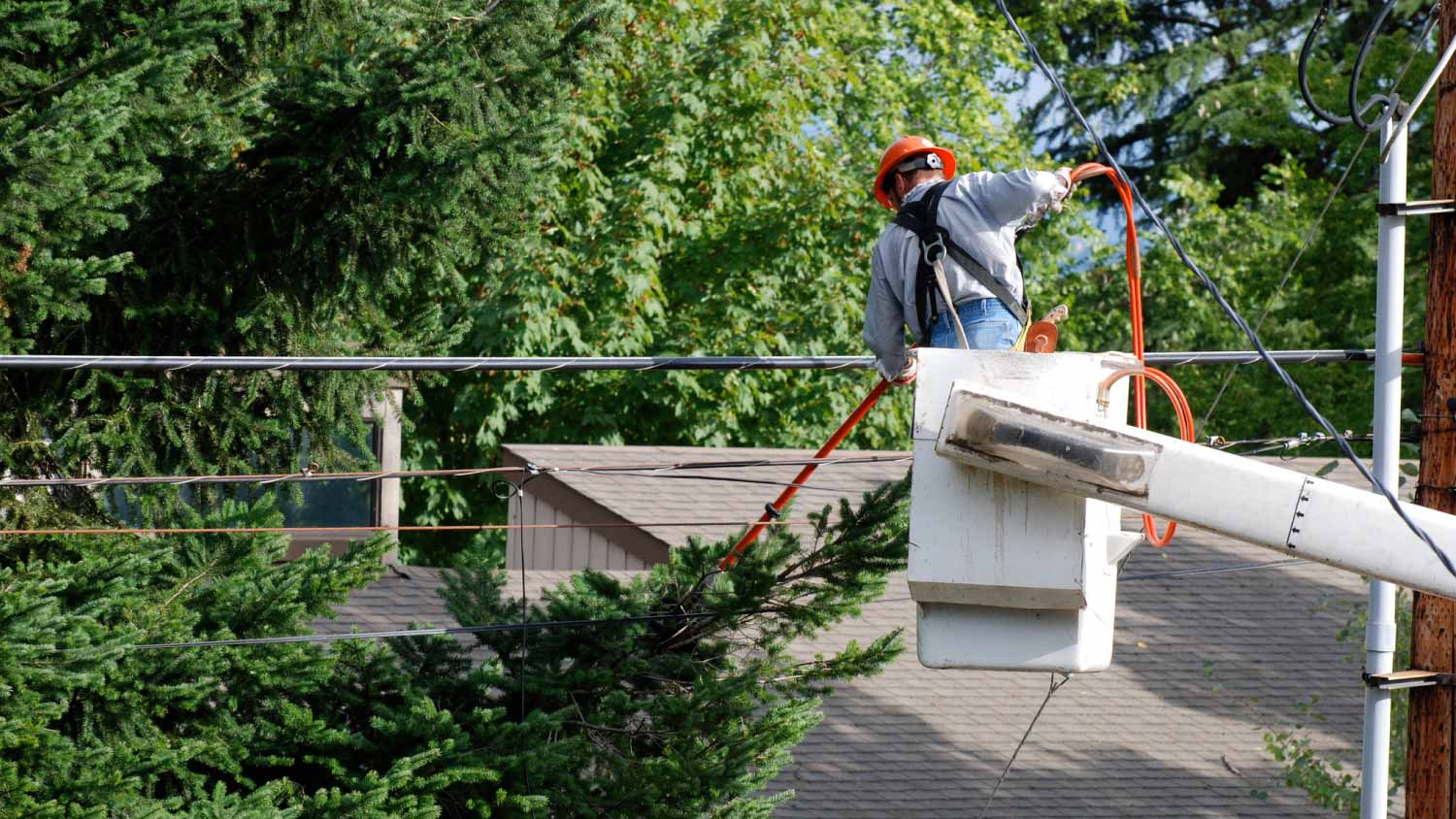
All that shade may be nice on a hot, summer day, but shade can also compromise your backyard security by offering burglars an opportunity to sneak around your property without getting caught. The best way to deter crime is to keep entry points clear and out in the open. This will make burglars think twice about targeting your house.
Speaking of reducing shade, adding exterior lighting to your home is a surefire way to ward off crime. Strategic placement of spotlights and floodlights can accentuate your landscape, bring beauty to your yard, and keep otherwise dark entry points bright. This can discourage anyone from approaching your home while also making it easier for security cameras to pick up on shadows and other unusual motions.
There are many types of outdoor lighting, but most homes benefit from spotlights and floodlights because they offer angled beams that lighten very specific features on your property.
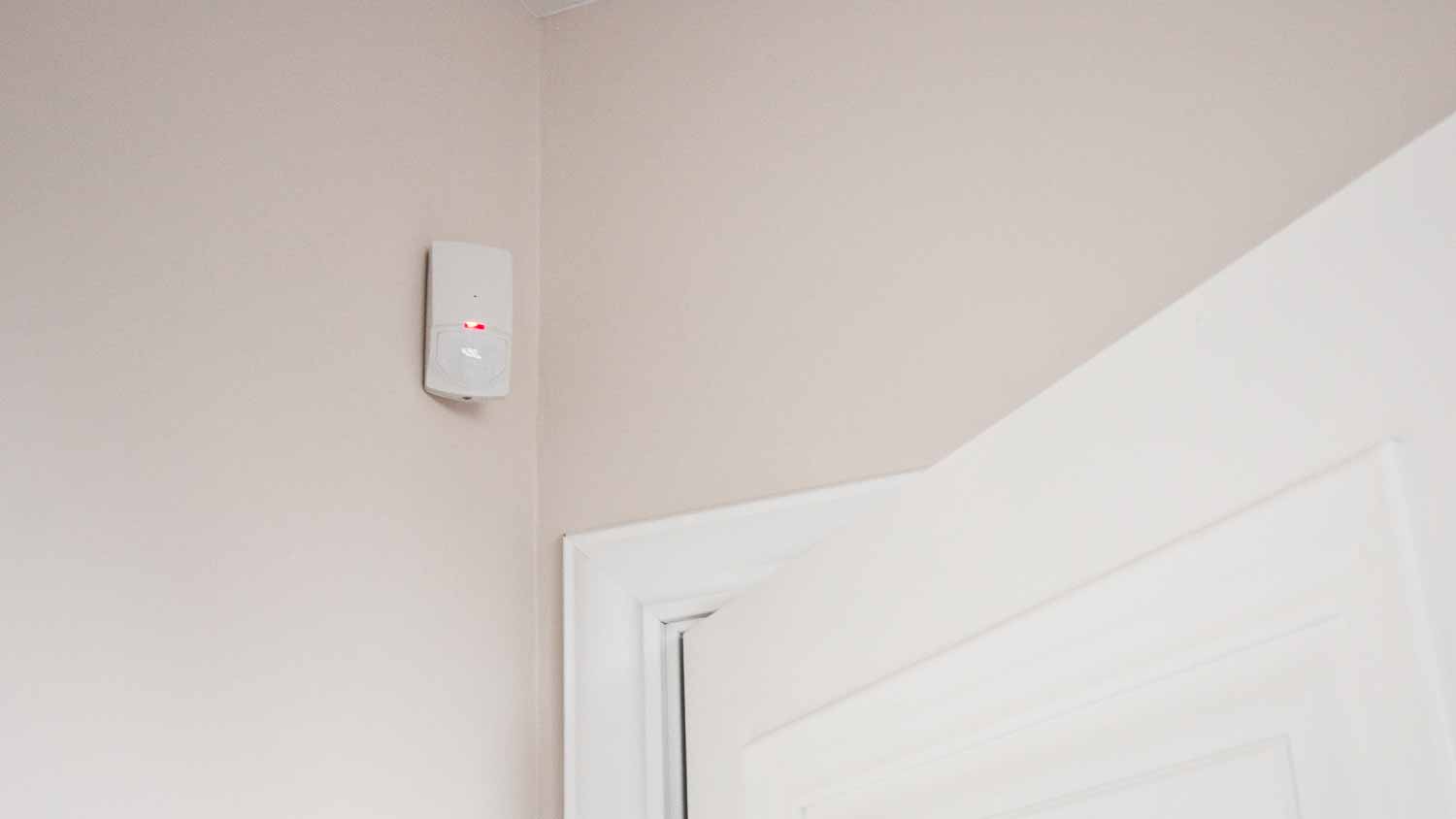
Depending on the style, you can find security cameras, spotlights, floodlights, and window sensors that come with motion detection. This feature does drain battery life for wireless home security systems, but you get the added bonus of having another method for detracting burglars from breaking into your home. When your motion detector picks up on a movement, it sends a signal to your phone or device to alert you.
Motion detectors might not be the best fit for areas with high foot traffic, as this can result in false alarms. Wildlife, vehicles, pets, and people can trigger the detectors when there isn’t a crime, which can make it harder to identify a serious threat.
Any entry point allows burglars to break into your home. Implementing security strategies in these areas can help decrease the chances of property crime. To do this, conduct a walk-through of your home to check doors and windows for signs of weakness.
You should install security doors and windows that use stronger materials, especially if you have hollow doors. The best front door material is solid wood or steel, which is more secure than vinyl or glass.
When choosing new windows, you’ll want to look for triple-pane windows with low-E coatings vs. single-pane or double-pane windows, as triple-pane windows offer better insulation and are harder to break.
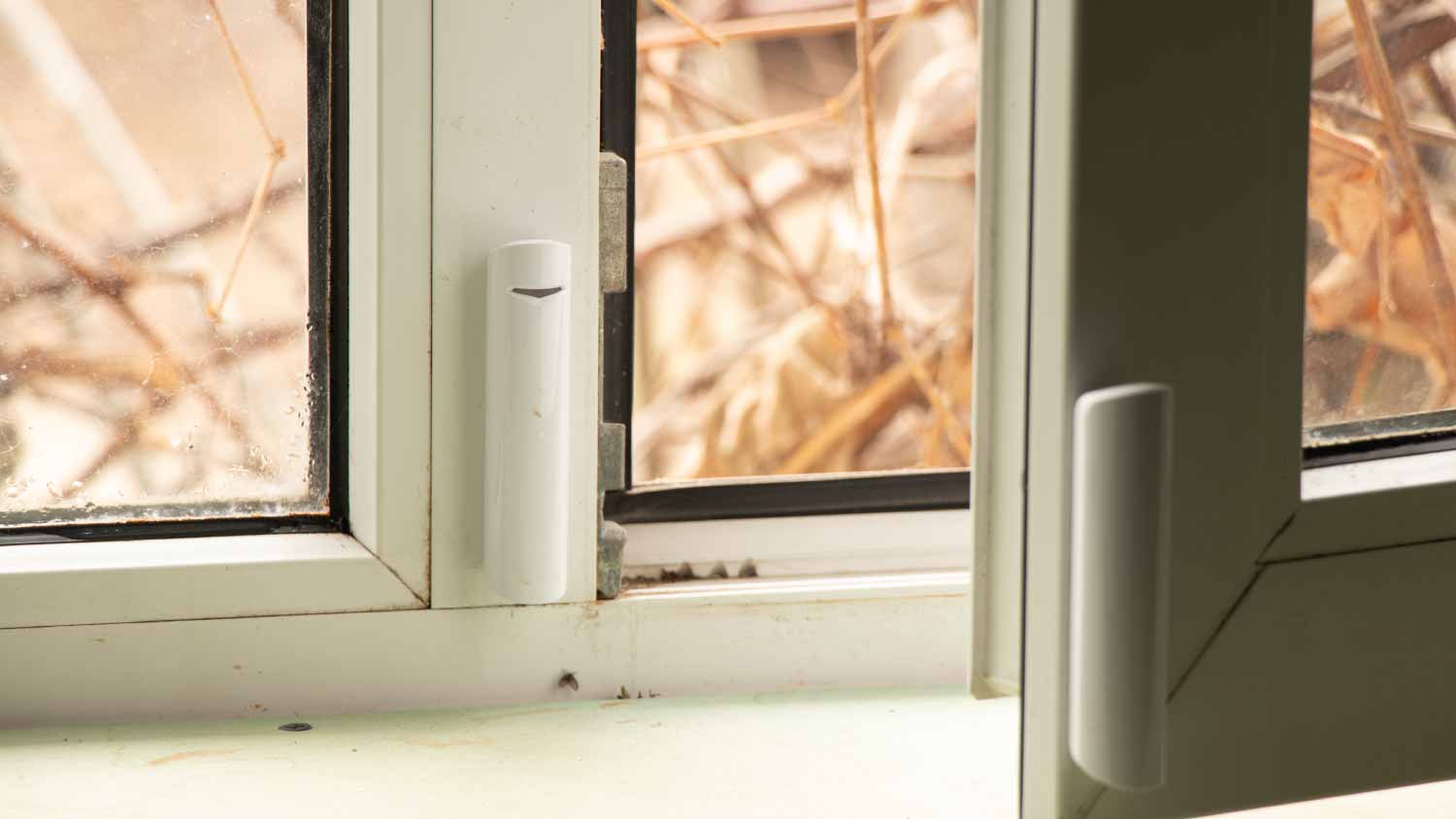
While you’re securing your windows and doors, it’s also a good idea to install window and door sensors to further prevent break-ins. These two-part sensors go on the edge of the door or window and the frame. When an intruder attempts to pry open one of these access points, an alarm goes off, alerting you of the crime as soon as it happens.
There are several types of window alarm sensors. Some homeowners like the added security of installing a glass break sensor, as contact sensors that only go off when a window disconnects from the frame do not offer warnings for intruders crafty enough to break the glass.
Don’t forget to upgrade any rotten or weak window and door frames, as these weak spots can make it easier for someone to break the frame and get into your home. In fact, your door might not be the reason someone is able to kick it down. Flimsy door frames can mean weak hinges—this can make it easy to break in even if you have the most durable door on the market.
Security signs don’t deter crime in all cases, but they can make a potential intruder pause. After all, anyone would think twice about entering a backyard with a warning sign that says “Beware of Dog.” But this doesn’t mean that a sign alone is enough to stop crime in its tracks. Installing security signs in place of a security system might save you money, but it’s best to install actual security equipment if you want to catch thieves.

A broken garage door can create an opening for crime and pose a safety hazard. Conduct a garage door safety test once or twice a year by inspecting your garage door for signs of wear and tear and mechanical malfunctions.
If your garage door opens and closes incorrectly, gets jammed, or makes unusual noises, then replace your garage door opener with a newer model to increase your home’s security. You might also want to replace an old, dingy garage door while you’re at it so that your home doesn’t stand out from the curb.
Remember to work with a garage door opener installer near you if you have any concerns about correctly installing a new garage door opener or garage door. Depending on the material and size, garage doors can weigh anywhere from 125 to 500 pounds.
From average costs to expert advice, get all the answers you need to get your job done.

How much does it cost to install a doorbell camera? It depends on whether you plan to DIY or hire a pro. Learn about different models and their power sources, too.
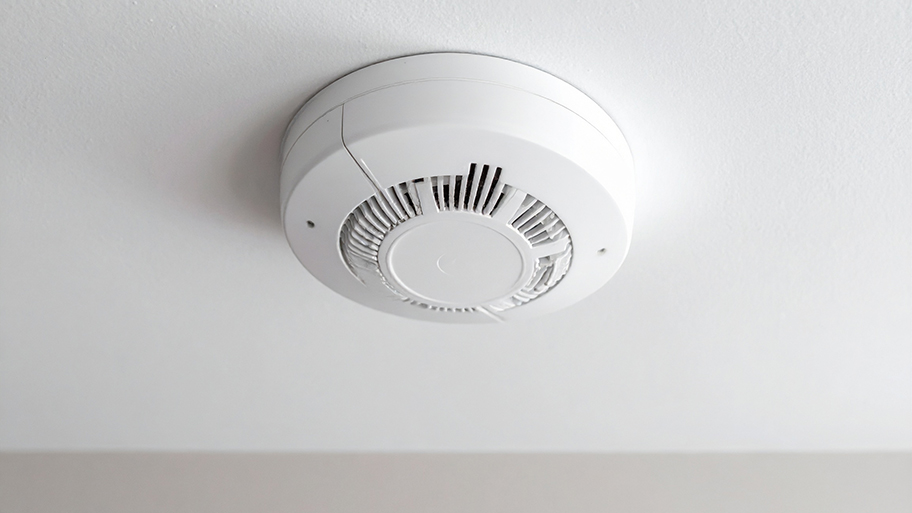
Discover true smoke detector installation costs. Learn about average prices, cost factors, and tips to save on your smoke detector installation project.

From warding off intruders to protecting from falls, bars on windows can make a home much more secure. Here’s how much it costs to install bars on windows.
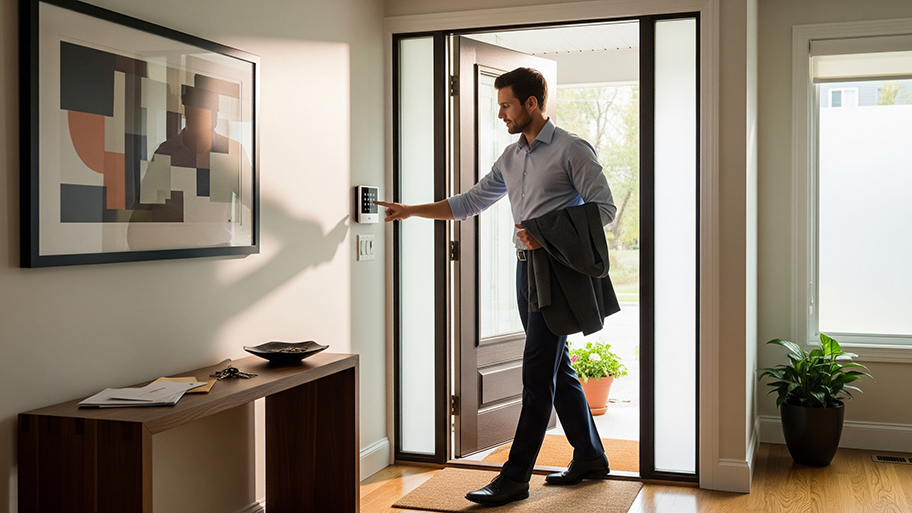
This guide will help you disconnect a home alarm system, whether you’re installing a new system or just want old electronics out of your house.

Home fire sprinkler system maintenance is paramount to ensure your safety in case of a fire. See how you can keep your fire sprinklers in tip-top shape here.

Tired of pesky smoke alarm beeps? They might signal a serious emergency—or a simple battery change. Learn how to silence those annoying beeps.